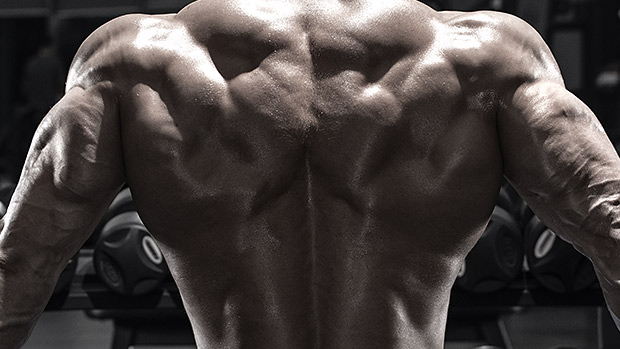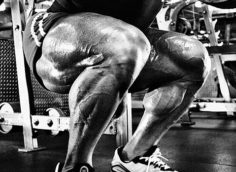The average gym bro trains his front and side delts too much with little emphasis on the rear delts. But remember, the rear delts are anatomically just as big (if not bigger) and require attention too (1).
Strong rear delts are responsible for optimal shoulder stability and athletic performance. And rear delt training acts as a great rehab and prehab for the shoulder joint.
Here are some highly effective exercises you've likely never tried before:
Most rows emphasize the back/lat musculature, but this one's different. It's one of the few compound exercises that makes the rear delt the limiting factor. This means your rear delts will be doing most of the work and giving out first when you hit failure.
This exercise can be done with a barbell, but the Smith machine stabilizes you more and allows you to focus on generating force.
Don't lock your shoulder blades down as commonly taught in other rows. Let them move naturally. If you're using a wider grip, your rear delt fibers will be in a good position to produce force.
Pull the bar all the way to your chest and down to the pins for the fullest range of motion. This is also a great exercise to track consistent overload with a set start and end point.
By rotating your hands, you get a fuller contractile range of motion for your rear delts. By doing so, you get them fully shortened while your shoulders are internally rotated.
And no, internal rotation isn't always bad. In fact, you may be having shoulder pain because you avoid internal rotation too much and have become too weak in that position.
In addition, the diagonal motion allows for more ROM without the dumbbells hitting your body.
The traditional band pull-apart has a few issues. Their line of force is off, they're hard to progressively load, and they can become too easy for advanced lifters. Oh, and they can spell bad news if the band snaps at the wrong time. (More common than you think.)
This variation solves all of these issues by placing the band around a pole. Now the line of resistance is more aligned with your rear delt giving you a better stimulus, and you can progressively load them better by standing a little bit further back.
They're inherently harder too, so advanced lifters can still get a juicy stimulus with a weak band.
If the band snaps, it'll snap away from your face, saving you a hospital trip and preventing your girlfriend from dumping you.
This is the ultimate internal rotation exercise, and remember, internal rotation is not always a bad thing. The weight is already light in this exercise, and this pattern prevents shoulder pain the best.
Doing lateral raises with your thumbs down will light up your rear delts without you having to bend over and fatigue the low back. Unlike other rear delt raise variations, the line of force also takes any upper back contribution out, so this is an isolation exercise that truly isolates the rear delts.
Great as a finisher or to correct major muscle imbalances. The angle is also a bit different and gives you variety when you need it.
Sets, Reps, and More
If you need something easy on the joints, yet highly effective, give these a try. The rear delts can recover quite quickly, so it's not uncommon to train them frequently (3-6 times per week). I recommend a different variation each workout within a training week.
The ideal rep range here is high or ultra high, think 10-30 reps. As for intensity, train them hard and even go to failure.
Each week, do more reps or add some more resistance. Repeat this for a few weeks and your rear delts will be popping out.
- MG;, Garner BA;Pandy. "Estimation of Musculotendon Properties in the Human Upper Limb." Annals of Biomedical Engineering, U.S. National Library of Medicine, pubmed.ncbi.nlm.nih.gov/12627828/.





